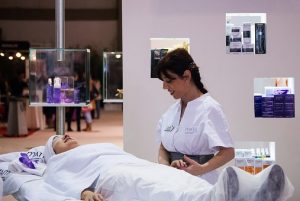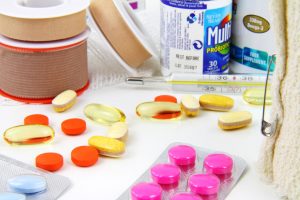Most Cosmetic Surgery patients today, have their procedures on an out-patient basis. They go to the surgery center at the appointed time, and some hours later, they are home.
Cosmetic Surgery is real surgery. However, most patients who choose to have these elective surgeries, are in good or excellent general health, allowing them to be released to ‘home care’ after their procedures.
We’ve talked about Recovering After Plastic Surgery in another post, from a more medical standpoint- giving you an idea of what’s involved physically, and how long recovery might take, depending on the procedure.
Here, we’ll give you ideas for successful and comfortable healing at home; things for you and your post-surgery caregiver to know.
DO I NEED A CAREGIVER?
 Yes, you do. After surgery, (during which you’ve received anesthesia) you will have someone with you for *at least* 24 hours. Your doctor or surgery center will have you affirm ahead of time, that someone will drive you home and remain with you for at least the first full day after your procedure. Legally, you are not permitted to drive for a period of time following anesthesia.
Yes, you do. After surgery, (during which you’ve received anesthesia) you will have someone with you for *at least* 24 hours. Your doctor or surgery center will have you affirm ahead of time, that someone will drive you home and remain with you for at least the first full day after your procedure. Legally, you are not permitted to drive for a period of time following anesthesia.
WHO CAN BE A CAREGIVER FOR ME?
Someone who is a responsible adult. You may choose a family member, a friend, or someone you might hire to perform this service.
A responsible adult is someone who can:
- DRIVE
- READ, UNDERSTAND, AND FOLLOW DIRECTIONS
- FOCUS ATTENTION ON YOU
- ASSIST YOU WITH PHYSICAL NEEDS
- KEEP A SCHEDULE
Again, a close friend or family member might be able to take on the role, but if not, as we said, there are other options. Our friend Deborah operates a service for post-outpatient surgery care (Rest Assured Recovery Services). Some patients are cared for in their own home, some at her home, and some choose a hotel or inn. Based on her years of taking care of people, we enlisted her to offer some of her best advice. Like most of you, she is not medically trained, but has learned through experience, what works, and what makes most cosmetic surgery patients feel better. Here’s what she shares:
WHAT HAPPENS WHEN A COSMETIC PATIENT COMES HOME FROM SURGERY?
REST
More than anything, despite what they may think or say, the patient will need to rest. If you’re in your own home, make sure everyone else understands this. No tasks for you. No physical interaction with children or pets. No food preparation or long phone calls. Just rest. (Very often, there will be little choice in the first day or two, because patients may be groggy, and will be taking medication to relieve pain.)
HOW DO YOU MAKE A PATIENT COMFORTABLE?
Again, the patient will have several prescription medications to help manage pain and other post-surgical issues. It’s always a plus to have a clean, comfortable bed – in a clean, uncluttered, well-ventilated room. To accommodate the type of surgery someone has just had, Deborah keeps a supply of pillows, rolls, and foam wedges- to prop up the upper or lower body, or provide support where needed or wanted. 
Also very helpful to have on hand, a supply of waterproof (disposable or other) pads to put on top of sheets, mattresses, and pillows. These will help take some of the stress away from emptying drains, or doing dressing changes.
She recommends that you organize materials for easy and quick access.
- First, and most important- Contact numbers– including after-hours contacts for the Doctor, and Emergency Services.
- Read and Refer to the Doctor’s Instructions. They will detail information about the patient’s medications, the schedule for dispensing prescriptions, notes on wound care, what to watch for, and the patient’s next appointment.
- Clear an area somewhere close to the patient, where you can place all of the dressings and ointments, thermometers, etc., to limit running back and forth to fetch things. Also, locate a safe area for prescription and other medications. (away from patient’s reach for 1st day)
- Have a supply of fresh drinking water nearby.
- Have a clear path to a restroom.
- Cold packs, or wrapped ice bags (per doctor’s instructions), to help with swelling
- Put a Baby Monitor at the patient’s bedside. It will help ease your mind, and the patient’s, to know you can hear them.
SHOULD THE PATIENT GET UP?
This is an important point. The At-Home Caregiver will be following instructions given by the doctor. (These should be posted where you can easily refer to them. And, refer to them often.)
One of the most important instructions, concerns mobility. Doctors will want most patients to ‘move’ as soon as possible, for a variety of reasons, including diminishing the risk of blood clot formation.
- How do you get a post-surgical patient to move? Having them understand it’s a medical necessity, should help with their motivation, even when a patient is feeling some pain. Small, slow steps, with aid, are possible with most patients.
- Assisting a patient to and from the restroom is necessary in the early hours or days. Our patient care expert Deborah has a number of medical devices to aid the patient; including a wheelchair, walker, and an extender with armrests for the toilet seat. (You don’t need to go out and purchase these medical aids, but be aware that you may be needed to assist a patient, as they walk, sit down, or stand up.)
If the doctor has specified, you may be cleaning the incision sites, and changing dressings. You will have instructions on how to perform these functions. You may also help the patient with showering.
PRESCRIPTION MEDICATION
A responsible adult must be in ‘charge’ of a patient’s medication schedule after surgery. Remember, the patient may still be considered not fully conscious for some hours, and may not be mobile. Making sure the patient doesn’t take the wrong amount of medication is a big responsibility. (*Our care expert Deborah makes sure to control and keep track. She keeps a chart for each patient, and carefully enters information on times and amounts of medication given).
WHAT SHOULD PATIENTS EAT?
It’s doubtful that a patient will be very hungry on that first day. They should remain hydrated, so water or whatever might be tolerated should be offered. The doctor may also have an instruction on how much is advisable to eat or drink. 
When the patient is able to have a meal, keep in mind, there may be some lingering issues of nausea, and/or constipation. Deborah says most of her clients do best with soft foods in the initial post-surgery days; including eggs, puddings, pureed fruits, and soft breads. She notes that (in addition to the anti-nausea medicine prescribed by the doctor) ginger is often a big help.
WHAT ABOUT ENTERTAINMENT?
This question made Deborah smile. She says most patients actually prefer to stay away from the computer and phone for the first days. (Depending on the procedures done, there may be bandages restricting vision, etc.) She recommends audio books for keeping patients entertained, along with conversation.
But most of all, experience has taught her, the patient needs rest, and realistic expectations. Healing takes time. You’ll continue to heal, even after all the bandages are off, and the stitches are gone. You took a long time to consider the options before deciding to have cosmetic surgery. Now, it’s about giving yourself time to heal, and getting ready to enjoy your results.
[San Jose Plastic Surgeon Vincent Lepore and his staff, are happy to answer your Cosmetic Surgery questions. Cosmetic Consultations are offered free of charge. To schedule an appointment, call (408) 356-4241 ]






